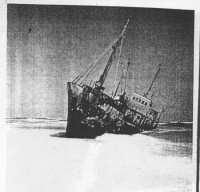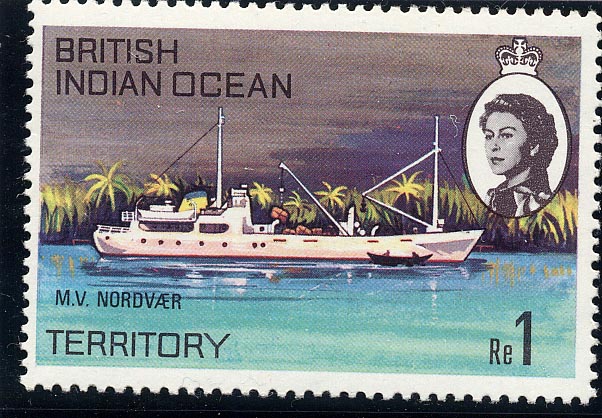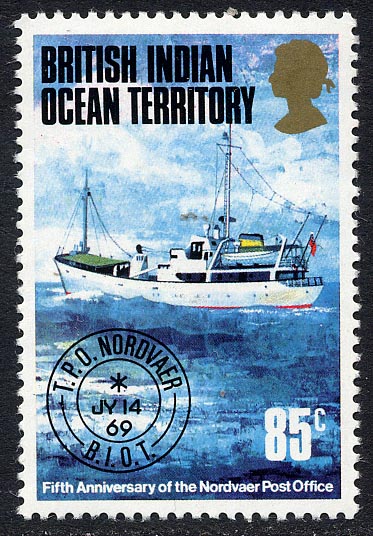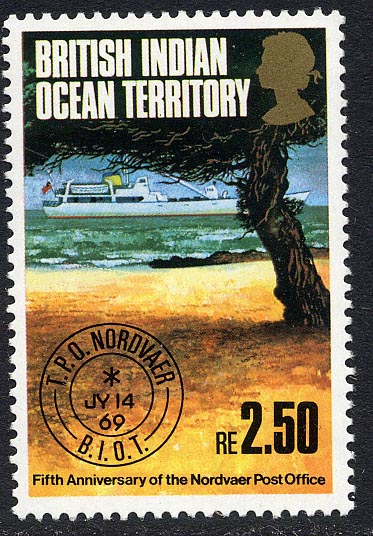Post
by D. v. Nieuwenhuijzen » Sat Nov 15, 2014 3:24 pm
M/V Nordvaer was built in Elmshorn outside Hamburg in 1958 for a small coastal shipping company in Bodo, northern Norway. She sailed on a weekly route along the coast from Trondheim north to the Lofoten islands. She was a very suitable vessel for this route and could accomodate 10 passengers, mostly English tourists on return trips, during the summer. Northbound freight was mostly general cargo, while on southbound trips it was fish and fish products. Her holds were equipped for cool as well as frozen cargo. Due to increased competition from the railways bieng extended north to Bodo and from road haulage, it was decided to sell the vessel after 10 years of service.
Her buyers were the Government of British Indian Ocean Territory, BIOT, later merged into the newly-formed state The Seychelles. The new owner decided to retain her now exotic name. Before leaving Norway, she was given increased sleeping accomodation by additional berth being installed in her upper deck.
Nordvaer wsa given two major functions in her new role:
to maintain an inter-island service for cargo, passengers and mail. When her post-office had been operational for five years in 1974, the ocasion was celebrated by the issuing of two commemorative stamps.
to connect BIOT and The Seychelles with other Indian Ocean islands and Mombasa, mostly for coprah export. In the early days, very few transocean liners services called at Victoria, so most of Seychelles geenrla import was transported on the Nordvaer.
Nordvaer's increased capacity made her suitable for one of the saddest events in recent Indian Ocean history: in 1972-1973 she was used for the deportation of the INDIGENOUS POPULATION of Diego Garcia to Mauritius, some 3-400 people, now forgoten by the media and the world.
While calling at Dar-Es-Salaam in 1979 Nordvaer hit a reef at the harbour entrance. She was refloated and sailed to Victoria with a full cargo, but later inspection revealed expensive damage. Her owners, the Government of The Seychelles, wanted to sell her, but could not obtain an acceptable price. It was eventually decided to run her ashore, under her own power, to serve as a breakwater on the small island of Desnoeufs, the southernmost in the Admirantes atoll, to facilitate landing for egg collectors exploiting the island's enormous population of breeding terns.
In the Mauritian newspaper "Le Mauricien" from Septembre 27 1997, an article is published under the name "Chagos: un état des lieux" (roughly: Chagos, an inspection)
Today we know under which circumstances the Chagossian population was thrown out from its archipelago. Willis-Pierre Prosper, the last administrator who supervised this operation, has written down the different dates of the final evacuation of the three main atolls, Diego Garcia on October 15 1971, Bodham Salomon on October 31 1972 and, Peros Banhos on April 27 1973.
According to different sources these evacuation had between 50 to 300 passengers. The initial capacity was of 10, thus with a 100% capacity increase, we only have 20 passengers. The promiscuity on the Norvdaer was more compatible with a slave boat from the slavery period than with any civilized trip. Years of loans(the biggest percentage of a salary was paid through barter, rice, salt,...) were necessary to buy furniture etc... Thus, all these goods, due to the lack of space on the Nordvaer, had to be left behind and are still used by the yachties who come at the Salomon atoll.
-
Attachments
-
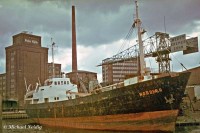
-
